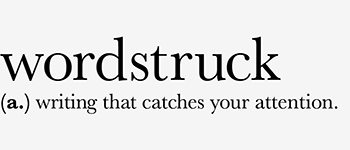Want to improve your business communications, but don’t know where to begin? With 10 years of experience of writing for business, I’ve learned a few things along the way. So here are my top five tips for improving your business writing.
1. Get started
Research, ask questions, talk to customers, fill your brain with facts, figures and knowledge, but there comes a time when you just have to knuckle down and get writing.
The first thing you write is unlikely to be anything like the finished piece. But if you don’t start, you can’t finish.
I will often start at the top of the page with a factual statement of my purpose in writing. For example: Write 100 words on the history of the company for an audience of people who are just starting out in business.
2. Be a reporter
As a journalist, I was used to asking the key questions who, what, where, when, how and why? As a copywriter, I still ask them every day.
Most important of all is ‘why?’. Why does a customer want or need this? What difference will it make to them? Answering that question really takes me to the heart of a sales communication.
3: Structure it
Start with the most important piece of information, then add to it. Try to stick to one idea per sentence or paragraph.
- Give your audience signposts and make sure the text is easy to read.
- Bullet points and lists are great for drawing attention to key points.
- Subheadings help readers skim to the part that’s most interesting to them, or to pick up reading if they’re distracted part way through.
4. Edit it
It’s not unusual for me to spend longer editing and rewriting than I do writing.
In business communications, I’m always on the watch for jargon and cliches. The handy short cuts that may be familiar language in a specific business can be alien or meaningless to people outside of it. So they need to go.
Cut big, then cut small. I consider the piece as a whole, then paragraph by paragraph, sentence by sentence before looking at it word by word.
I’ll look for repetition, for unnecessary themes or complex phrases and either eliminate or find a better way to say them.
Editing tip – leave it
It’s easy to get so wrapped up in something you’ve written, that you lose perspective. No matter how tight the deadline, I like to step away from a piece of business writing – make a phone call, get a drink of water and then try to come back to it with new eyes.
Not only can this be a good way of spotting errors, but it also encourages me to be critical of my own work.
In an ideal world, I shouldn’t have to proof-read my own copy, but in reality, I have to. I use a number of tricks to con my brain into thinking it’s seeing something for the first time.
I read it aloud. Start from the end. Turn the paper upside down. Read every word one by one. If I spot a mistake, I look for the one next to it.
5. Test it
Does your writing do what you set out to do? Check it against your brief or statement of purpose.
Get a second opinion before you publish. Do they understand it? Did they encounter any mental speed bumps? Bits where they had to go back and read it again? Did they spot any errors?
Once it’s out there in the big wide world, what can you learn from your customers’ reactions to it? Are there metrics you can measure in terms of responses, awareness and sales? What can you learn for your next successful communication?
What are your top tips for successful business writing?


Comments are closed.